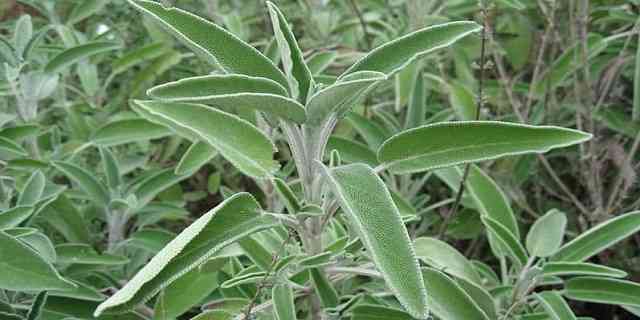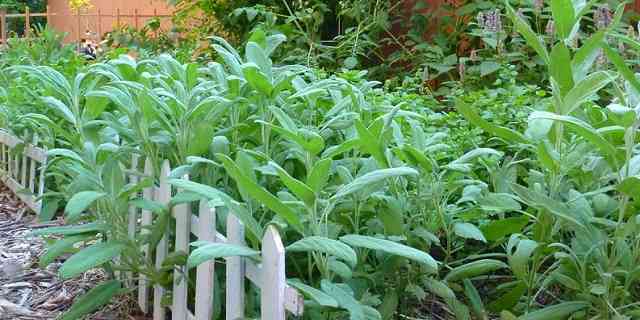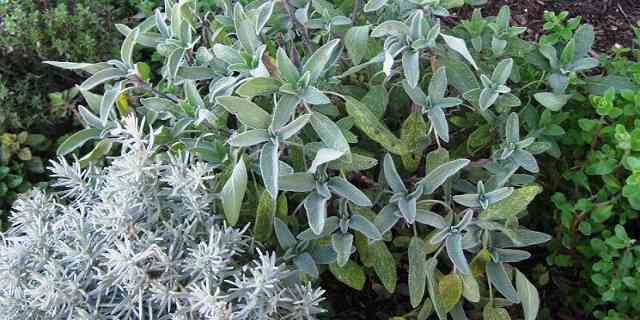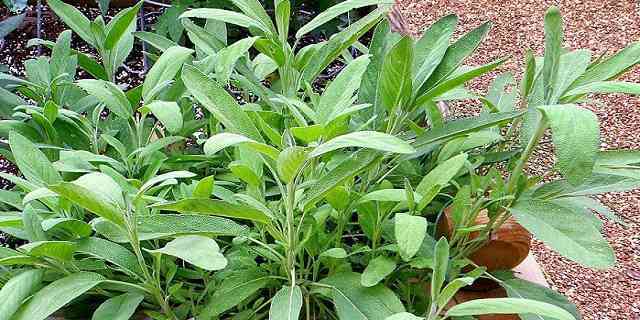Benefits of growing in Mediterranean climate
Garden Sage, or Salvia officinalis, to use its botanical name, is one of about 1,000 species of sage. Many are both fragrant and ornamental, and so of immense value as garden plants, but in addition, Garden Sage has culinary, medicinal, and other properties that aid neighboring plants to resist pests and disease.
In the Mediterranean and other dry climates, it is doubly of value because of its hardiness to drought and its capacity to thrive in the alkaline soils common to most dry climates. Despite requiring some care and attention, it is easy to grow, just requiring a good prune in the spring and after flowering, to encourage a compact and dense habit.

Herbal, Culinary, and Medicinal Benefits
Different cultures have developed varied uses of sage leaves. In Europe and North America they are used to flavor meats, gravies and sources, while in the Middle East and the Mediterranean region, they find their way in a multitude of salads.
Try putting a couple of fresh leaves in a plate of sliced, hard, white cheese, a sliced tomato, a sprinkle of lemon juice and olive oil, and salt and pepper. Take out the leaves after about 20 minutes so that the sage does not make the salad too bitter.
Many medical claims have been made for Salvia officinalis. While some of these are far-reaching and possibly far-fetched, the consensus points to the antiseptic properties of the oils contained in the plant’s leaves. A simple way to benefit from these is to immerse sage leaves for about 10 minutes in a boiling pot of tea. Garden Sage leaves are of course an essential component in aromatherapy.

A Fine Ornamental Plant
Irrespective of its herbal qualities, Salvia officinalis, more than justifies its existence as a beautiful ornamental plant, whether in a herb garden or a flowerbed. Its foliage is attractive all the year round, while its blue, purple flowers make a worthy contribution to any border. It can be listed with those perennials that “hold” a flowerbed during the seasons when many of the flowering plants are passed their best and need to be cut-down or replaced.
Furthermore, one can plant together, a number of varieties of the species, in order to create variation on a theme; always a good ploy in garden design. In addition to the species itself, with its grey-green foliage, there are varieties with purple-colored leaves, variegated foliage, and the famous variety “Tricolor”, whose grayish leaves have an irregular cream border.
Garden Sage to the Aid of Neighboring Plants!
Salvia officinalis appears to repel many pest insects from its vicinity, while attracting bees to gather the nectar from its flowers. That may explain why a border containing Garden Sage is invariably free of pathogenic insects, the odd chewed leaf here or there, notwithstanding. Some people are put-off by the thought of attracting bees to their garden, but if unmolested, they are not threatening, and perform a vital role in pollinating flowering plants, and in the general sanitation of the garden.
The sage herbs you cook with in the kitchen also a makes a delicious addition to dry gardens. Culinary Sage or salvia officinalis is native to the warm Mediterranean regions. They grow to a height of three feet tall and almost as wide. The stems are square and woody, usually covers with short hairs. All parts of this grayish green plant are aromatic. Salvia leaves are long and thin, up to 4 inches long and 1/2 inch across. They are crinkly, fragrant and sticky and can be used in cooking either fresh or dried. Sage grows in full sun to partial, dappled shade, and are hardy to about 20 degrees.
Sage plants flower in the summer with upright usually with blue or light blue flowers. They are beautiful in arrangements, or dried for kitchen decoration. Salvia can tolerate regular garden watering, but will also do well in drought conditions. After a few years they will need to be cut back to remove dead branches and maintain shape.

Sage can be grown in containers. The recommended size is at least an 8 inch pot, or larger. The smaller the pot, the faster plants can dry out, so it is advisable to water every week as long as the soil doesn’t become soggy.
Sage has a strong, earthy aroma. It adds flavor and depth to stews and soups. It mixes well with beef or chicken and makes green beans seem a little bit heartier. Pineapple sage is a close relative and adds a lighter flavor to food. It goes well with chicken. Fresh sage is great stuffed into chicken or turkey roasts and you can use the whole branch. Put an orange in there for a great flavor combo. The best time to pick sage for drying is just before it flowers, but any time of year will work. To dry the herbs, tie them in a bunch and hang them upside down in a cool dry place to snip as needed.
Before modern medicine sage tea was gargled for sore throats and cold tea was drunk to stop sweating. Crushed fresh leaves were used on insect bites. The Romans used sage in religious rites and Native Americans recognize White Sage for blessing and cleansing.
Start a little kitchen garden either outdoors or on your windowsill. Good companion herb plants for sage are rosemary and thyme as they have similar water and sun requirements.
